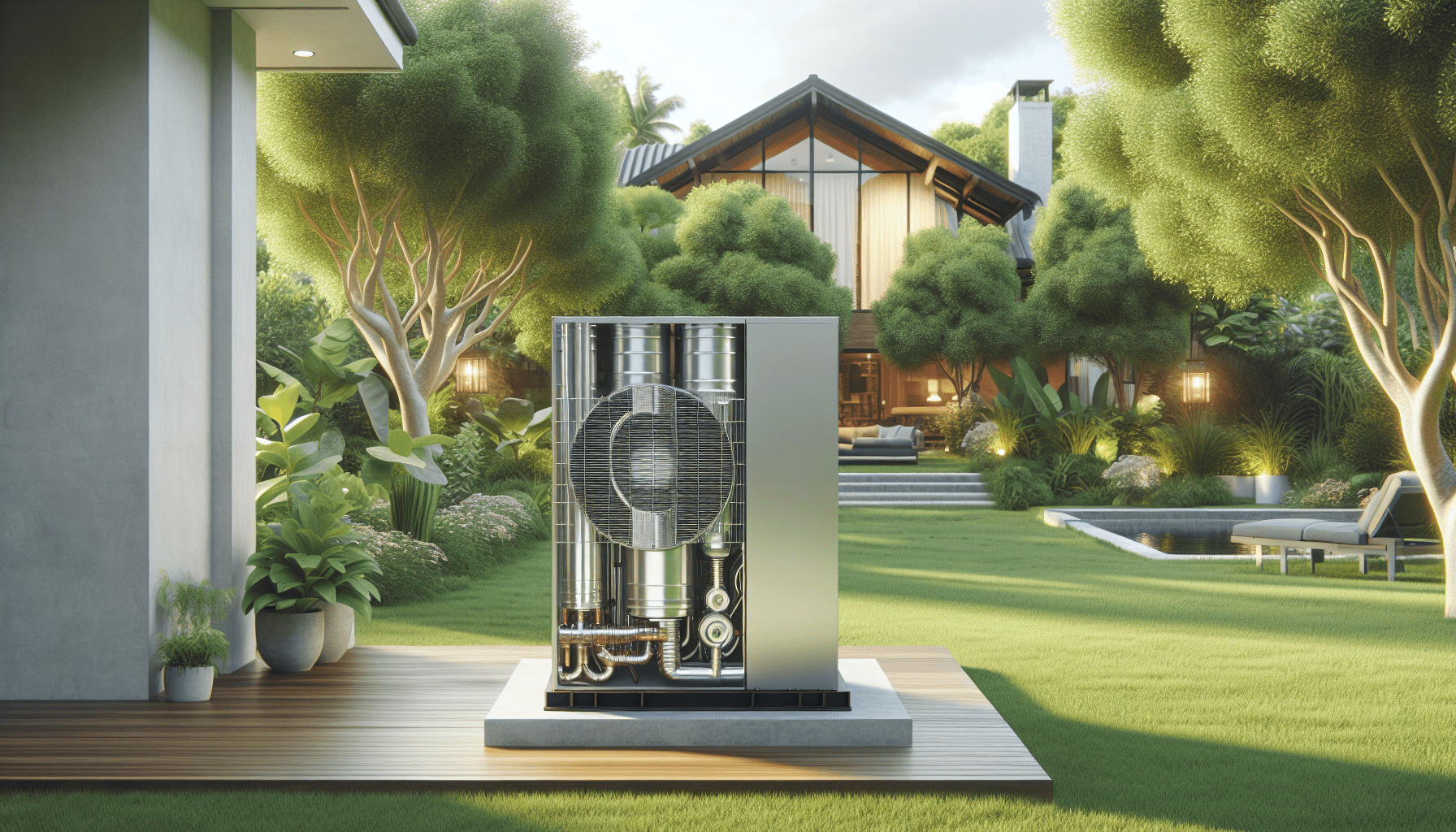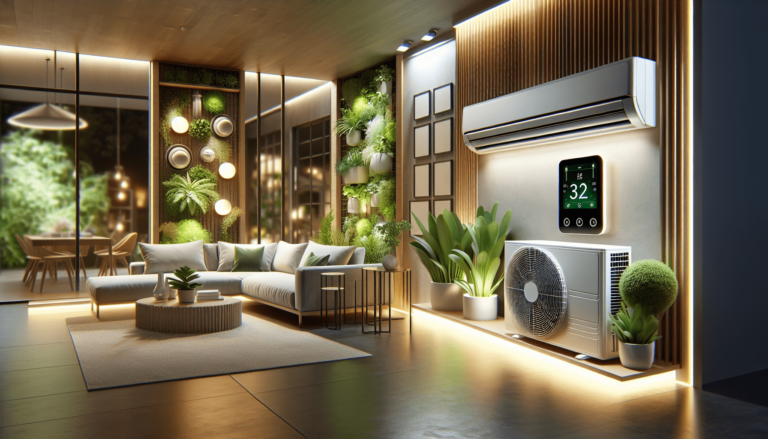

HVAC Services
Get Professional Repairs From The Area's Trusted HVAC Technicians. Ask About Our Services! We Offer Professional Heating & Cooling System Repairs And Guarantee Long-Lasting Results.
Got Question? Call us: (850) 678-2665Financing
Is A Bigger HVAC Always A Better Choice?
Discover why bigger HVAC systems aren't always better for your home. Uncover common myths, explore proper sizing, and learn to ensure comfort and efficiency.

Have you ever found yourself pondering whether upgrading to a larger HVAC system would really be the best decision for your home? This is quite a common question for those looking to solve heating and cooling issues, and it’s a good idea to approach it with some healthy skepticism. Bigger might seem better at first glance, but could it lead to more issues down the line than it solves? This article will take you through everything you need to know about HVAC systems and why going bigger isn’t always the best solution.
Understanding HVAC Systems
Understanding what an HVAC system does can help you make more informed decisions. HVAC stands for heating, ventilation, and air conditioning, and these systems are responsible for controlling the indoor climate of a building. Whether you realize it or not, the HVAC system is like the heart of your home—it keeps things running smoothly, maintains air quality, and ensures that your living conditions remain comfortable no matter the season.
The Components of an HVAC System
An HVAC system might seem like a big box that magically controls the air, but there’s much more going on behind that grill. Here’s a quick breakdown of its primary components:
-
Thermostat: This is the brain. You’ll use this to set your desired temperature, and the thermostat will communicate with the HVAC system to achieve that.
-
Furnace: This component heats the air. It’s generally located in the basement or a specially designated area within your home.
-
Heat Exchanger: This part of the furnace warms the air before it circulates into your rooms.
-
Evaporator Coil: When you want cool air, the evaporator coil is the star of the show. It works with refrigerant to chill the air before it flows throughout your home.
-
Condensing Unit: Typically found outside, this component expels the heat gathered from the indoor air.
-
Ductwork: Think of these as air highways. The ductwork transports air to and from the various HVAC components.
-
Vents: These are the end points of your HVAC system. Air enters and exits through these openings.
Knowing what makes up an HVAC system is the first step in understanding why bigger isn’t always better.
The Bigger Doesn’t Always Mean Better Argument
Contrary to popular belief, a larger HVAC system will not necessarily help you achieve better temperature control or efficiency. In fact, oversized systems can short cycle, leading to inefficiencies, increased wear and tear, and potentially higher energy bills.
The Dangers of Short Cycling
Short cycling occurs when an HVAC system turns on and off too frequently without completing a full heating or cooling cycle. Several issues arise from this:
-
Increased Energy Bills: The constant stopping and starting consume more energy than if the system ran at a consistent rate.
-
Reduced Lifespan: Frequent cycling puts more stress on the system components, leading to premature failure. Imagine if you kept turning a light switch on and off—it wouldn’t take long for the bulb or fixture to give up the ghost.
-
Poor Temperature Regulation: Short cycling doesn’t give the system enough time to either cool or heat your home evenly. Some rooms remain uncomfortable regardless of the investment you made in that bigger unit.
Humidity Problems
Humidity control is another factor often overlooked. Larger HVAC systems without the proper dehumidifying capacity can lead to moisture imbalance in your home. A bigger system may cool your house too quickly, leaving humidity levels intact because the system doesn’t run long enough to remove moisture from the air.
When humidity isn’t managed correctly, you can run into a host of problems including mold growth, dust mite infestations, and an overall muggy feeling indoors. You may find yourself fiddling with fans or additional dehumidifiers to manage an issue you may have inadvertently created by going bigger.

Evaluating your Needs: A Smaller System Might Be Just Right
Now that you’re familiar with the negatives of oversizing, the next logical step is evaluating the size of HVAC system that actually meets your home’s needs. Turning to an industry professional for this can save you not only money but also a significant amount of trouble.
Proper Load Calculations
Professional HVAC installers use “load calculations” to determine what size system your home necessitates. They’ll consider factors such as:
-
Square Footage: The size of your living space is the most obvious determinant.
-
Insulation Levels: Homes with better insulation can often get away with smaller systems because they retain more conditioned air.
-
Shade & Sun Exposure: Rooms with large windows facing the sun may require a more powerful unit or additional considerations such as sunshades.
-
Climate: The severity of your local climate affects how robust your HVAC system needs to be.
Understanding these variables allows for more precise sizing, ensuring comfortable and efficient temperature control without the downsides that come with excessive capacity.
The Advantages of Proper Sizing
While it might be tempting to err on the side of “more is better,” properly sizing your HVAC system offers numerous advantages:
-
Efficiency: Properly sized systems operate more efficiently, translating to lower energy bills.
-
Comfort: A well-sized system maintains consistent temperatures without drastic fluctuations, ensuring you are comfortable year-round.
-
Longevity: Equipment that doesn’t have to work as hard lasts longer.
When To Consider An Upgrade
Sometimes, upgrading your system is genuinely necessary. If your HVAC system is aging or if you’ve expanded your home, a change might be in order. Here are some scenarios where an upgrade makes sense.
Signs Your HVAC Needs Replacement
-
Age: Most HVAC systems last between 15 to 20 years. If yours falls within this range, it might be worth considering a change.
-
Frequent Repairs: An increase in breakdowns and repairs is a telltale sign that you should start thinking about an upgrade.
-
High Energy Bills: A jump in your energy consumption without a change in your lifestyle can point to an inefficient system.
-
Inconsistent Temperatures: If some rooms are too hot or too cold, you may have an undersized or old system struggling to perform.
-
R22 Refrigerant: Systems utilizing the R22 refrigerant should be replaced. Production of R22 has been phased out due to environmental concerns, making it expensive to maintain and repair units reliant on it.
Correctly Tackling An Upgrade
Now, even if your current system fails every replacement criterion, resist the temptation to go all out and purchase the largest system on offer. Follow these steps instead:
-
Consult Experts: Professionals like those at Tempacure Heating and Air Conditioning can guide you on the best path. Based in Niceville, Florida, they specialize in HVAC installations and understand local climate challenges.
-
Use Modern Tools: Ensure your contractor uses up-to-date load calculation tools such as Manual J, Manual D, and Manual S. These tools offer precise sizing instructions, ensuring optimal choice.
-
Consider Smart Systems: Advances in technology mean today’s HVAC systems are far more efficient, even at smaller sizes, compared to older models. Look into smart technology that can adjust settings automatically based on your preferences and habits.

Long-term Benefits of a Well-suited HVAC System
Choosing the correct HVAC system size offers benefits beyond immediate comfort and energy savings. It engenders long-term advantages that make your home more livable and your life a bit more worry-free.
Improved Air Quality
A well-functioning HVAC system ensures better air quality by effectively removing dust, allergens, and pollutants. Constant short cycling in oversized units hinders air filtration, but an appropriately-sized system ensures more air passes through the filters as needed.
Lower Maintenance Costs
A less strained system requires fewer repairs, sparing you both money and inconvenience. Regular maintenance becomes a less daunting task when you’re not trying to patch up problems caused by an inappropriate system size.
Increased Resale Value
Finally, a modern, efficient HVAC system can boost your home’s resale value. Potential buyers are keenly interested in running costs and comfort levels, and a correctly sized and well-maintained system speaks volumes about the quality of your property. It can even become a selling point that sets your home apart from the others.
Conclusion
So, is a larger HVAC system always the better choice? As we’ve explored, bigger does not always mean better when it comes to HVAC systems. Your best strategy is to thoroughly evaluate your needs, take advantage of expert advice, and consider the myriad factors at play within your home environment. A meticulously chosen HVAC system assures optimal comfort, cost savings, and long-term reliability, making the choice clear—size really does matter, but not always in the way you might have thought.






